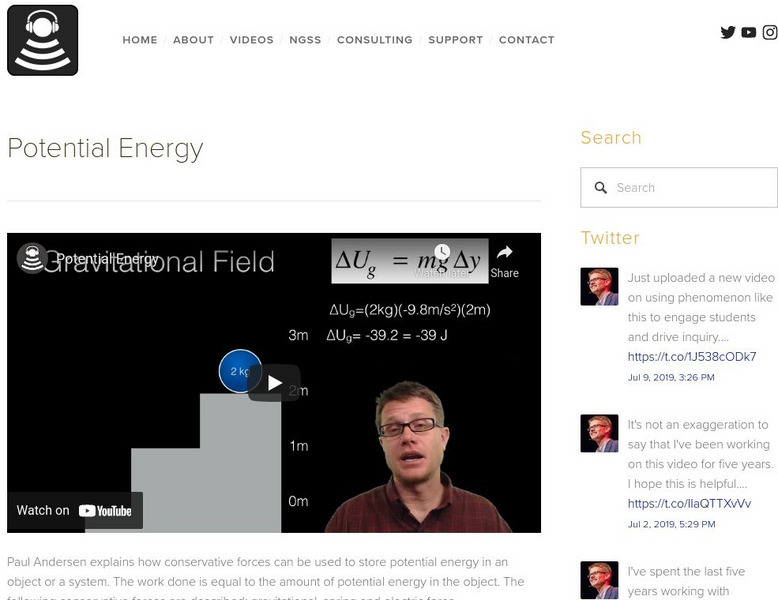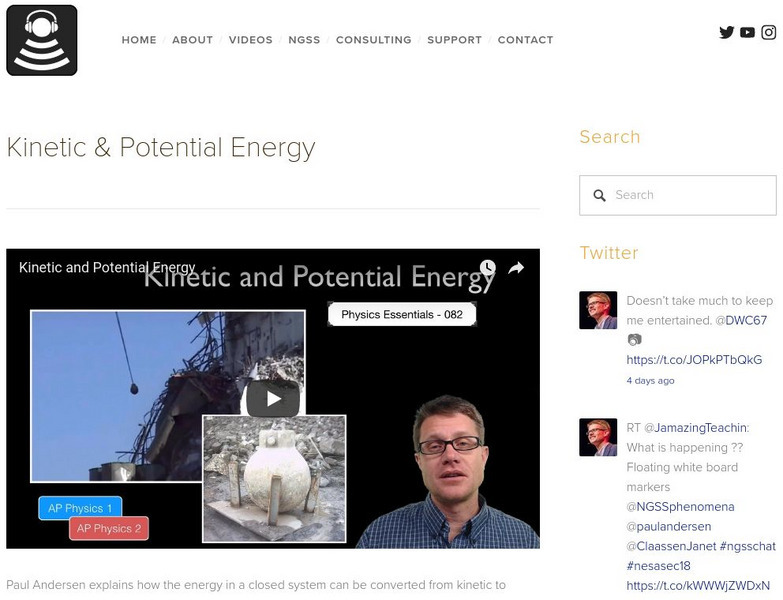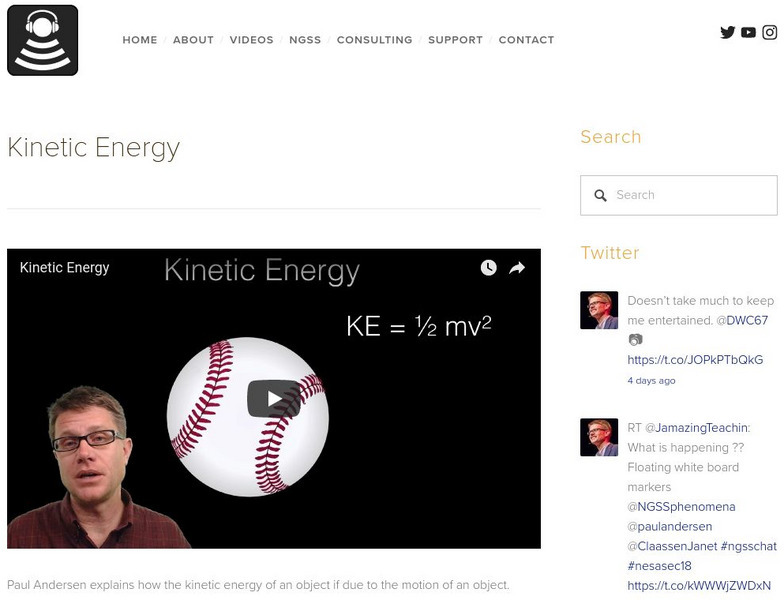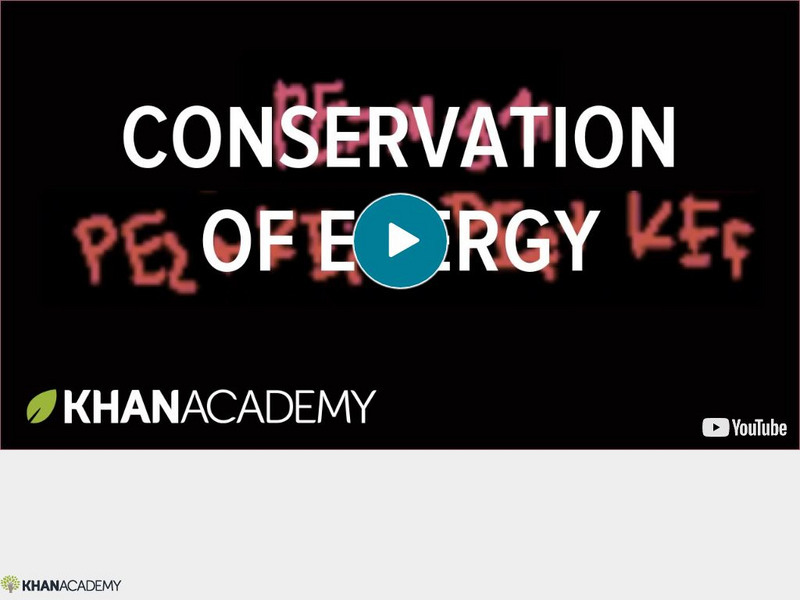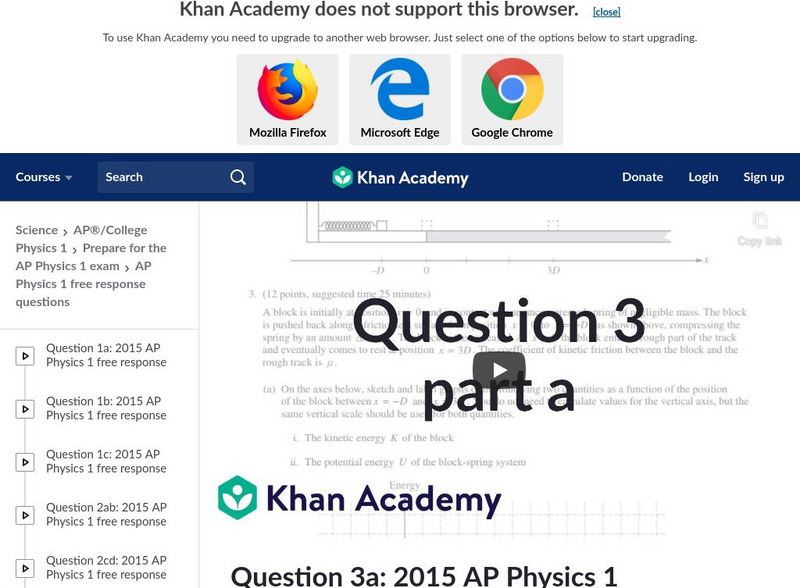Bozeman Science
Bozeman Science: Work Energy Principle
In the following video Paul Andersen explains how the kinetic energy gained by an object is equivalent to the work done on the object. The force on the object must act parallel or antiparallel to the motion of the object to do work. [8:12]
Bozeman Science
Bozeman Science: Total Energy
In the following video Paul Andersen explains how the total energy of a system is the combination of kinetic, potential and internal energy of the objects. He then shows you how to calculate the kinetic energy, gravitational potential...
Bozeman Science
Bozeman Science: Heating
In the following video Paul Andersen explains how heating is the transfer of energy (heat) from a warmer object to a cooler object. Heat can be transferred through conduction, convection and radiation. At the microscopic level conduction...
Bozeman Science
Bozeman Science: Potential Energy
In the following video Paul Andersen explains how conservative forces can be used to store potential energy in an object or a system. The work done is equal to the amount of potential energy in the object. The following conservative...
Bozeman Science
Bozeman Science: Kinetic and Potential Energy
In the following video Paul Andersen explains how the energy in a closed system can be converted from kinetic to potential to kinetic energy. Sample problems and a simulation is contained. [4:46]
Bozeman Science
Bozeman Science: Bernoulli's Equation
In the following video Paul Andersen explains how Bernoulli's Equation describes the conservation of energy in a fluid. The equation describes the pressure energy, potential energy, and kinetic energy of a fluid at a single point. A...
Bozeman Science
Bozeman Science: Conservation of Linear Momentum
In the following video Paul Andersen explains how linear momentum is conserved in all collisions. In completely elastic collisions the kinetic energy of the objects is also maintained. Several examples and demonstrations are included....
Bozeman Science
Bozeman Science: Kinetic Theory & Temperature
In the following video Paul Andersen explains how the macroscopic measure of temperature can be related to the average kinetic energy of molecules in motion. The Boltzmann constant and distribution can be used to calculate the root mean...
Bozeman Science
Bozeman Science: Temperature
In the following video Paul Andersen explains how the temperature is a measure of the average kinetic energy of particles in an object. The temperature is proportional to the average kinetic energy according to the Kelvin scale. At...
Bozeman Science
Bozeman Science: Heat Exchange
In the following video Paul Andersen explains how energy can be transferred from warmer objects to colder objects through heat. Temperature is a measure of the average kinetic energy of the particles in a substance. When two objects are...
National Science Foundation
National Science Foundation: Science of Speed: Car Safety
Conservation of energy explains how this NASCAR race car driver was able to walk away from a horrific crash in 2008. See how the design of the car enabled it to absorb and transform kinetic energy, and protect the driver from injury. [5:30]
National Science Foundation
National Science Foundation: Science of Nhl Hockey: Work, Energy & Power
In order to generate a 100 mile-per-hour (160 kph) slapper, NHL players depend on three important physics concepts: work, energy and power. [5:15]
Khan Academy
Khan Academy: Chemistry: Work Done by Isothermic Process
A video lecture explaining how to find the work done in an isothermic process. Lecture defines how the adiabatic process is isolated from world and an isothermic process keeps the temperature the same. Video looks at temperature, ideal...
Yale University
Open Yale Courses: Physics 200: Work Energy Theorem and Conservation of Energy
The lecture addresses kinetic and potential energy. The work-energy theorem is defined and the Law of Conservation of Energy is explained using several examples.
Bozeman Science
Bozeman Science: Kinetic Energy
In the following video Paul Andersen explains how the kinetic energy of an object if due to the motion of an object. Objects can have kinetic energy but they cannot have potential energy unless they are part of a system. [4:47]
Bozeman Science
Bozeman Science: Internal Energy
In the following video Paul Andersen explains how the internal energy of a system can change as the internal structure of the system changes. An object model will not be able to account for the restoring forces and so a system model must...
Bozeman Science
Bozeman Science: Elastic and Inelastic Collisions
In the following video Paul Andersen compares and contrasts elastic and inelastic collisions. In all collisions the linear momentum will be conserved. In an elastic collision the kinetic energy of the objects will also be maintained....
Khan Academy
Khan Academy: Work and Energy: Introduction to Work and Energy
An introduction to the concepts of work and energy. [9:18]
Khan Academy
Khan Academy: Work and Energy: Work and Energy (Part 2)
Continues the discussion of work, and introduces kinetic and potential energies. [9:52]
Khan Academy
Khan Academy: Work and Energy: Conservation of Energy
Discusses how to use the law of conservation of energy to see how potential energy is converted into kinetic energy. [10:07]
National Science Foundation
National Science Foundation: Science of the Winter Olympics: Snowboarding
Scientists explain the physics of snowboarding by talking about dynamic balance, gravity, force, kinetic energy, and potential energy. [4:08]
PBS
Nova Labs: Putting Energy to Use
Energy comes in many different forms. It can be stored in the chemical bonds that hold molecules together, carried in the motion of a spinning wheel, or held in a boulder sitting on a cliff. But energy isn't a fixed thing. In fact, we...
Khan Academy
Khan Academy: Thermodynamics Part 2: Ideal Gas Law
To begin, Sal solves a constant temperature problem using PV=PV. Then he relates temperature to kinetic energy of a gas. In the second half of the video, he derives the ideal gas law. [10:18]
Khan Academy
Khan Academy: Question 3 A: 2015 Ap Physics 1 Free Response
Graphing energy versus position for a block accelerated by a spring and stopped by friction. [7:45]



